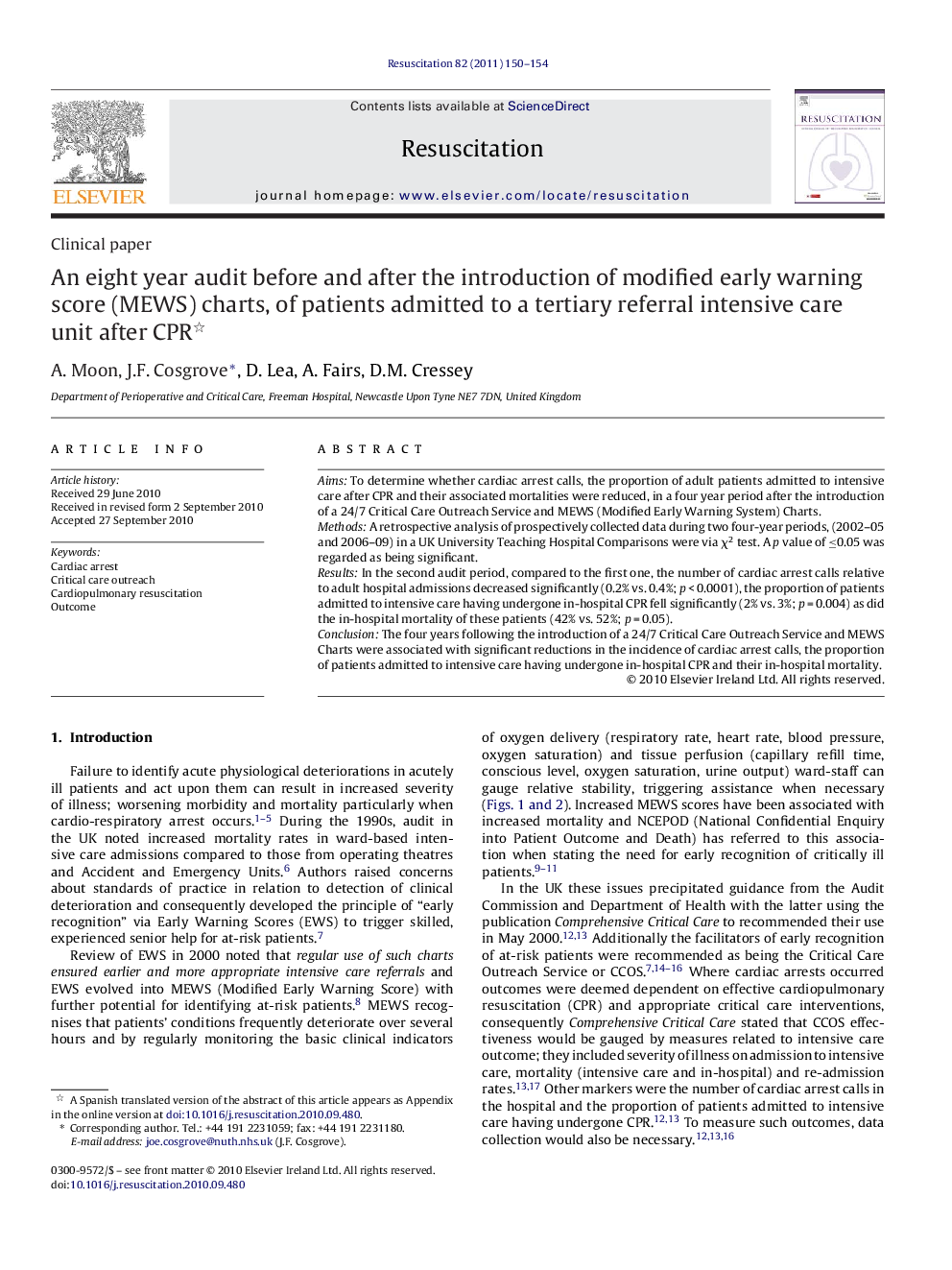| Article ID | Journal | Published Year | Pages | File Type |
|---|---|---|---|---|
| 3009126 | Resuscitation | 2011 | 5 Pages |
AimsTo determine whether cardiac arrest calls, the proportion of adult patients admitted to intensive care after CPR and their associated mortalities were reduced, in a four year period after the introduction of a 24/7 Critical Care Outreach Service and MEWS (Modified Early Warning System) Charts.MethodsA retrospective analysis of prospectively collected data during two four-year periods, (2002–05 and 2006–09) in a UK University Teaching Hospital Comparisons were via χ2 test. A p value of ≤0.05 was regarded as being significant.ResultsIn the second audit period, compared to the first one, the number of cardiac arrest calls relative to adult hospital admissions decreased significantly (0.2% vs. 0.4%; p < 0.0001), the proportion of patients admitted to intensive care having undergone in-hospital CPR fell significantly (2% vs. 3%; p = 0.004) as did the in-hospital mortality of these patients (42% vs. 52%; p = 0.05).ConclusionThe four years following the introduction of a 24/7 Critical Care Outreach Service and MEWS Charts were associated with significant reductions in the incidence of cardiac arrest calls, the proportion of patients admitted to intensive care having undergone in-hospital CPR and their in-hospital mortality.
